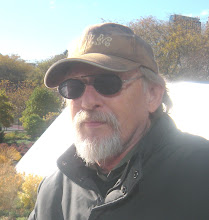Thursday, December 23, 2010
So you want to Teach Tai Chi?
Midwest Tai Chi and Self Defense located in Burlington, Wisconsin, just south west of Milwaukee, is conducting classes which can lead to certification for teaching Sun style Tai Chi Cuan as practiced by Dr. Paul Lam. Ron Pfeiffer, director of Midwest says this:
This is the first event of it's kind for our local program. We will need all the help we can muster to make it successful so if you know of someone who might be interested in this please pass it on. We hold 3 lessons each week teaching the material which is needed to get certified through Dr. Lams organization. Starting lessons now would greatly increase a persons enjoyment and learning at the upcoming workshop.
More information can be had on their workshop at http://dragonkenpo.org/Tai_Chi_Training.html
Tuesday, December 21, 2010
When Push Comes to Shove
Recently, a Tai Chi classmate posted a phone camera video of some of us doing Push Hands at the Tai Chi Center. Watching myself getting pushed was an valuable experience. I could see the moment I had tensed and offered a structure to my opponent which allowed him to allow me to push myself off balance. Push Hands is one of the three most important Tai Chi practices: the others being the single form and the sword form. It is essentially a game* with specific rules played with the Tai Chi principles of relaxation, rooting and following. Each player has to be willing to push the other, an act contrary to the Tai Chi notion of only reacting to your opponent. In theory, only 4 ounces of pressure may be used, although in practice, more is applied. With glee
.
*I’ll probably get some contrary email for calling Push Hands a “game” but becomes one all too easily as push comes to shove.
Push hands is not about pushing… it’s about being pushed. (This is a good thing since I am pushed more than I push!) At the Tai Chi Center in Madison it is called “Sensing Hands.” Sensing the energy of your opponent is the basis of Push Hands. Learning to read the other’s intension through slight tensions and changes of speed or direction is an art form.
Yang Chengfu’s treatise on Push Hands mentions sticking, adhering, and following. This not only lets you sense the energy but allows you to redirect it. Too many times during practice the other has waited for an opening and shoved at my center, pushing me off balance. This is about speed and strength, it’s not Tai Chi. All I learn from this is not to let my guard down. If I am fast enough, I can deflect the shove and use the other’s momentum to unbalance them. This is sticking, adhering, and following.
There are two kinds of Push Hands, Fixed Step and Active, or Moving Step (and there are two forms of the moving step--- the Combined Step form where the two people move forward and backward, and the Loop Step form which allows for some overlapping steps; also in the Dalu form, the movement is in all four directions.) Whereas the formal methods of Push Hands are choreographed, the friendly sparing is not. For me, the moving version makes more sense, being more like the applications of Tai Chi Cuan. It can bring these applications into a practical arena where many variations can be tried out. Although the fixed stance is good for sensing opponent energy, you will never find yourself in a street fight where nobody will move their feet!
Fu Zhongwen book on Mastering Yang Style Tajiquan, translated and commented by Louis Swaim renders one of the Tai Chi Classics, the Song of Push Hands as follows:
In Ward Off (peng), Roll back (lu), Press (ji), and Push (an), you must be conscientious.
Upper and Lower follow one another; the other has difficulty advancing.
Let him come and strike with great strength.
Lead his movement, using four ounces to deflect a thousand pounds.
Attract him into emptiness, then join, then issue.
Adhere, connect, stick, follow, without letting go or resisting.
For further study I hardily recommend Louis Swaim’s comments on Push Hands (and on Fu Zhongwen’s book through out.) As for my complaints about some partners in Push Hands practice, I have to say that there have been several “others’ who have demonstrated their knowledge and understanding of the form and helped me a great deal toward my own understanding. I only caution that a little knowledge is a dangerous thing, particularly when your are flying through the air!
Subscribe to:
Comments (Atom)



